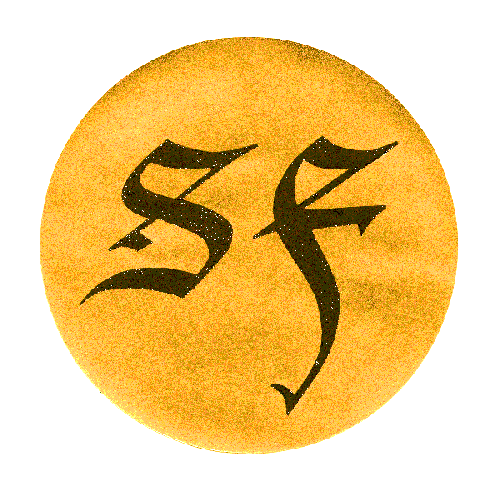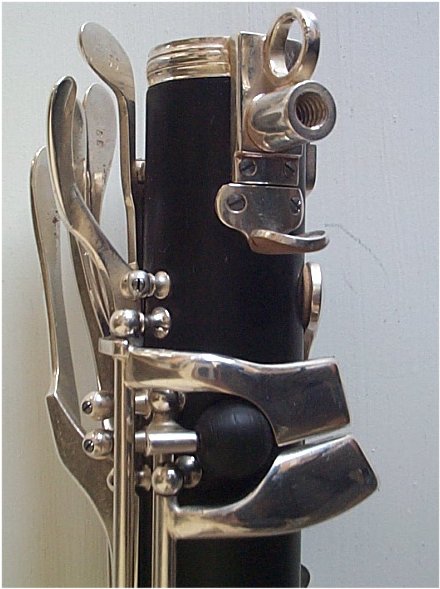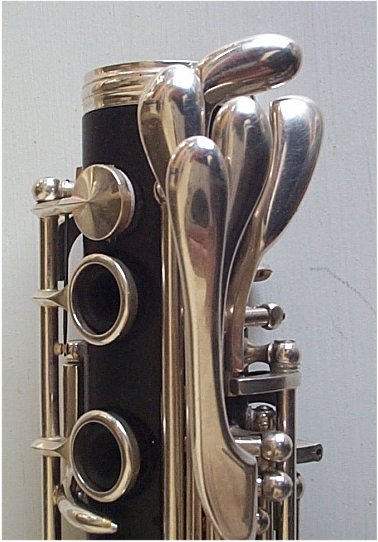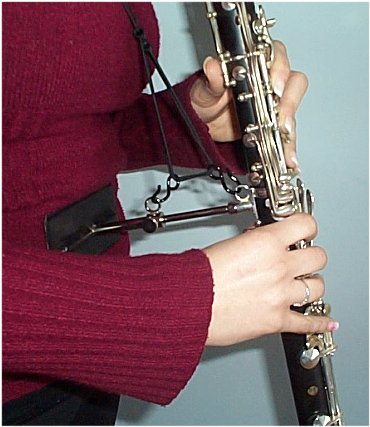 |
 |
|||||||||||||||||||||||||||||
| home
reproduction
historical clarinets
|
The so-called basset clarinet, i.e., a soprano clarinet with the lower range extended to written C (or B; see below) is now universally recognized as the correct instrument for performance of the Mozart Concerto K622, Quintet K581 and the late operas. There are three options for obtaining a basset clarinet: (1) An existing instrument can be converted, by grafting an extension onto the lower joint and adding the basset keywork; (2) A complete new basset lower joint can be made, to fit the existing upper joint and bell of any make of clarinet; (3) A complete basset clarinet may be ordered. Each option produces a functionally similar instrument, with no differences in tuning or other playing qualities. Converting a conventional clarinet to basset status is the simplest, quickest and most economical route. (Regrettably, because of the flared lower joint bore of the French clarinet, it is not practical to make a removable basset section that could simply be added to a clarinet without modification. With some German bore clarinets, though, this may be possible.) While most basset clarinets are in the key of A (for the Mozart Concerto and Quintet), a number have also been made in Bb (for use in Mozart operas, particularly the aria Parto, parto from Tito) and C (especially useful for opera orchestra work). Though basset clarinets built to date have C as the lowest note, current research (click here for information) indicates that low B may have been used by Mozart. Thus a range to B is offered as an option, either integral with the basset joint or as a removable section. Standard keywork has the low Eb key for the right hand little finger, and three right thumb keys for D, C#, C (and a fourth for B, if fitted); the touchpieces are shaped to allow very easy transitions between notes (a recent innovation is a roller ball acting as the touchpiece for C#). A popular option is a low D key for the left hand little finger, in addition to the thumb key. An alternate Ab/Eb lever for the left hand is also available, and is recommended. (For thoughts on the basset key arrangement, click here.) Basset joints in current production have closed holes for low Eb and C#, which improves pad sealing and reduces adjustment concerns. A support
mechanism, using an abdomen brace and neck strap, allows easy holding
of the instrument and frees the right thumb to operate keys. (This
is also recommended for playing a normal clarinet, in cases of strain or
injury to the right hand.)
Basset clarinet lower joint
Keywork for right thumb (with
roller ball for C#) and left hand little finger (including L4 Ab/Eb and
L4 low D)
Support mechanism (abdomen brace and neckstrap)
|



